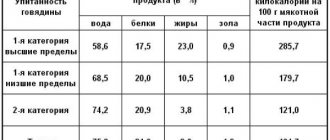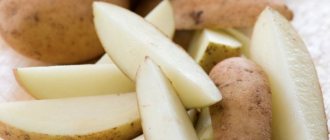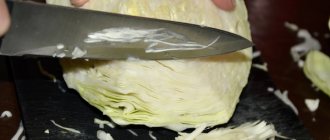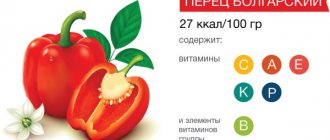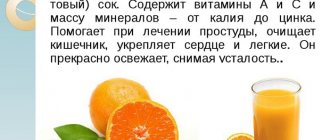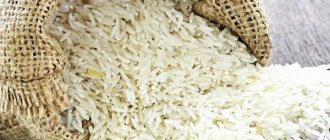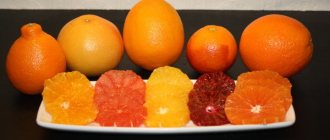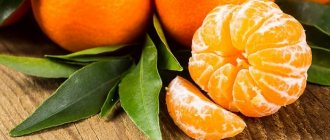One of everyone’s favorite first courses, red borscht, in its classic version is quite a high-calorie dish.
A rich, thick first course cooked in pork broth and seasoned with frying in lard is a high-calorie “time bomb”.
What should you do if you don’t want to deny yourself the pleasure of eating borscht, but the number of calories consumed is of no small importance to you?
There is a solution - you can cook this dish not with pork broth, but with chicken broth. In this case, the calorie content of the dish will decrease, and the high taste qualities of the borscht will be preserved.
If the number of calories in a finished dish is a fundamental issue, then it is preferable to use chicken breast for the broth. This is the most dietary and low-calorie part of the chicken carcass.
The energy value of borscht in chicken broth with frying is 46 kcal per 100 grams.
For cooking, we need fillet weighing 400 grams per 2 liters of water. Wash the meat thoroughly, cut into portions and fill with cold water. Bring to a boil, carefully remove the foam and leave our broth to simmer over low heat. Don’t forget to salt the water 10 minutes after boiling.
While the broth is cooking, we prepare the remaining ingredients for our dish:
- wash and peel potatoes, onions, carrots, beets;
- shred cabbage;
- cut the potatoes into larger cubes, the onions into smaller ones;
- Grind the beets and carrots on a grater.
We have prepared everything necessary. Then we have two ways:
- Cook the borscht in the traditional way - first fry the onion in a frying pan with the addition of sunflower oil until golden brown, and then stew the carrots and beets with it.
- Avoid frying vegetables and achieve the lowest possible calorie content. In this case, all the vegetables are sent directly to the pan with boiling broth.
Whichever cooking option you choose, do not forget to add a bay leaf and squeeze a couple of cloves of garlic 10 minutes before the end of cooking.
Just before the end of cooking, add chopped herbs - dill and parsley.
Remove the finished borscht from the heat and let it stand for 20-30 minutes. That's all - you can invite your household to the table!
If you took the opportunity to reduce the calorie content of the dish by refusing to fry it, then 100 grams of your borscht will contain 34 calories.
Chemical composition of borscht with chicken
The chemical composition of red and green borscht is slightly different. The table shows an analysis of the chemical composition of 2 types of soup: red with a standard set of ingredients (including fried onions and carrots) and green (with spinach and sorrel, without beets).
| Red borscht | Green borscht | |||
| Amount per 100 g, mg | % of daily value | Amount per 100 g, mg | % of daily value | |
| Vitamins | ||||
| A | 65 mcg | 7% | 105 mcg | 12% |
| B1 | 0.038 | 2.5% | 0.05 | 3.4% |
| B2 | 0.075 | 4.2% | 0.09 | 5% |
| B4 | 8 | 1.6% | 9.36 | 1.9% |
| B5 | 0.045 | 0.9% | 0.052 | 1% |
| B6 | 0.077 | 3.9% | 0.076 | 3.8% |
| B9 | 6 mcg | 1.5% | 8.8 mcg | 2.2% |
| C | 4 | 4.5% | 5.38 | 6% |
| E | 0.69 | 4.6% | 0.36 | 2.4% |
| H | 0.2 mcg | 0.4% | ||
| K | 6.4 mcg | 5.3% | 37 mcg | 31% |
| PP | 2.3 | 12% | 2.38 | 12% |
| Microelements | ||||
| Potassium | 191 | 7.7% | 227 | 9% |
| Calcium | 17 | 1.7% | 22 | 2.2% |
| Silicon | 9.8 | 33% | 6.5 | 22% |
| Magnesium | 11.36 | 2.8% | 18 | 4.5% |
| Sodium | 285 | 22% | 339 | 26% |
| Phosphorus | 45 | 5.6% | 49 | 6.2% |
| Chlorine | 237 | 10% | 364 | 16% |
| Iron | 0.6 | 3.4% | 1.3 | 7.5% |
| Iodine | 1 mcg | 0.7% | 1.5 mcg | 1% |
| Cobalt | 0.98 mcg | 10% | 1.1 mcg | 12% |
| Manganese | 0.07 | 3.6% | 0.09 | 4.6% |
| Copper | 69 mcg | 6.9% | 65 mcg | 6.5% |
| Molybdenum | 2.3 mcg | 3.4% | 2.1 mcg | 3% |
| Strong | 1.3 mcg | 2.5% | 1.4 mcg | 2.6% |
| Chromium | 1.9 mcg | 3.8% | 0.9 mcg | 1.8% |
| Zinc | 0.2 | 1.8% | 0.2 | 1.8% |
The benefits and harms of the dish
The beneficial properties of borscht are as follows:
- a dish balanced in terms of the ratio of dietary fat, vitamins and minerals saturates the body with essential substances;
- cabbage and potatoes contain potassium salts, which help remove excess fluid and cholesterol;
- beets have vasodilating properties, improve cerebral circulation, and together with onions and cabbage help in the prevention of atherosclerosis;
- the consumption of boiled beets, according to research by scientists, is a preventive measure against the formation of benign and malignant tumors (coloring compounds have a detrimental effect on cancer cells, some of the vitamins and microelements in beets are included in the structure of enzymes that regulate hematopoietic processes);
- spices, onions, garlic, stimulating appetite, increase the secretion of gastric juice, and generally improve digestion and intestinal function;
- carrots activate the functioning of the stomach and intestines, have a positive effect on the functioning of the heart, and normalize blood pressure;
- sorrel, spinach, parsley (the main components of green borscht) have a beneficial effect on the functionality of the liver and stomach; serve as a prevention of vitamin deficiency and anemia, are characterized by a high content of vitamin C, which helps strengthen the immune system; reduce putrefactive processes occurring in the intestines;
- Boiled vegetables contain a large amount of fiber, which has a laxative effect and serves as a soft sorbent, removing toxins and nitrates from the body.
Chicken, compared to other types of meat, is low in calories and high in vitamins and minerals.
100 g contains the following % of valuable substances from the daily value:
- potassium up to 6.5% – necessary for normal brain functioning, heart disease, hypertension;
- magnesium up to 4.8% - has a calming effect, dilates blood vessels, is necessary for atherosclerosis, liver and biliary tract diseases;
- phosphorus up to 20% - important for normal brain function and bone strength;
- iron about 8% (prevention of anemia);
- vitamin A – 4.4%: important for maintaining overall eye health, bone strength; has antioxidant properties; prevents the risks of developing cancer and cardiovascular diseases;
- B1 – 2.7% and B2 – 6.7% one of the main functions of which is the prevention of mental disorders and the fight against depression;
- RR – 63%: reduces cholesterol levels, normalizes the functioning of the nervous system and digestive organs;
- high protein content (28 g per 100 g of chicken breast), amino acids in particular, glutamine (helps build muscle mass).
High-quality chicken meat and broth are recommended for consumption in the following cases:
- those suffering from insomnia, stress, depression;
- for gout, polyarthritis, ulcers;
- for diabetes;
- serves as a prevention of strokes and atherosclerosis, normalizes blood pressure.
Possible harm from including borscht in the diet occurs in the following cases:
- vegetables (in particular, carrots, beets) grown in unfavorable conditions using large amounts of fertilizers are characterized by a high content of nitrates;
- chicken meat from an unscrupulous producer contains large quantities of antibiotics and hormones;
- Excess oxalic acid can cause kidney disease, osteoporosis, and caries.
To neutralize possible harm as much as possible, you should:
- skinning;
- soak the meat for 1-1.5 hours in water;
- drain the first broth;
- put a whole onion in the broth (onions can absorb some of the harmful substances), after preparing the broth, throw away the onion;
- Serve the dish with sour cream - sour cream neutralizes oxalic acid.
You should use soup with caution in the following cases:
- with gastritis;
- in case of disturbance of salt metabolism in the body;
- people with high stomach acidity.
What is the calorie content of a plate of borscht?
We figured out the calorie content of borscht per 100 grams of ready-made dish. But this is not entirely convenient for calculations. Therefore, now we will talk about the calorie content of 1 plate of borscht.
It’s worth noting right away that the sizes of the plates vary. On supermarket shelves you can find both giant plates that hold 500-600 milliliters of liquid, and small plates with a volume of only 200 milliliters. Therefore, to know exactly the capacity of your plate, fill it with water, and then pour the water into a measuring glass (you can do it in several steps), then you will know exactly how much liquid your dish can hold and what the calorie content of a plate of borscht is.
For example, let's take a standard portion (300 grams). Accordingly, the calorie content of a plate of borscht (classic) will range from 90 to 550 kcal. But if you decide to add sour cream or toasted crackers to the borscht, the calorie content will increase in accordance with the calorie content of the additives. Therefore, we strongly recommend that people who are on a diet or have heart problems do not overuse rich borscht with various high-calorie additives.
The calorie content of a standard plate of green borscht ranges from 110 to 515 kcal. Follow the same rule here. Do not overeat fatty foods. It will not benefit your body, but will only complicate the work of the heart, contribute to the formation of blood clots and blockage of blood vessels.
Calorie analysis of borscht with chicken
The calorie content of borscht with chicken depends on the ingredients of the recipe. The table shows a list of the most commonly used products with calorie content.
| Component | Number of calories per 100 g serving, kcal |
| Chicken breast | 113 |
| Chicken legs | 215 |
| Wings | 186 |
| Hearts | 185 |
| Necks | 170 |
| Stomachs | 154 |
| Paws | 215 |
| Potato | 77 |
| Carrot | 35 |
| Tomato | 24 |
| Onion | 41 |
| Beet | 42 |
| Tomato paste | 82 |
| White cabbage | 23 |
| Sauerkraut | 19 |
| Beans | 94 |
| Sorrel | 22 |
| Spinach | 23 |
| Champignon mushrooms) | 27 |
| Vegetable oil | 899 |
| Mayonnaise (67%) | 629 |
| Sour cream (15%) | 162 |
What determines the calorie content of homemade borscht?
Surely many people know the popular wisdom that “every cook makes different borscht” or “every housewife has her own borscht recipe.” And you can’t argue with that, because even if you prepare this traditional Slavic soup strictly according to your mother’s recipe, the taste will be completely different. It won't be worse or better, it will just be different.
And the same situation arises with the energy value of the dish. It is not possible to say exactly and confidently how many calories are in borscht with chicken, because everyone has their own cooking recipe. Some people add beans to the soup, some like borscht with boiled beets, and others prepare the dressing in a frying pan.
The absence and presence of potatoes in the soup, the amount of beets, the type of dressing (sour cream, mayonnaise), and even the banal part of the chicken carcass from which the first course is cooked affect the number of calories in 100 grams of chicken borscht.
Today we will carefully analyze all the most popular versions of borscht with chicken and find out how many kcal are contained in our lunch plate.
Calorie content per 100 g
The table provides information on the calorie content of borscht in different preparations:
| Calorie content per 100 g, kcal | |
| Cabbage borscht with tomato dressing and mushrooms (with chicken legs) | 66 |
| With beets in a slow cooker (with breast fillet) | 73 |
| Option with beans and sauerkraut (with chicken wings) | 67 |
| Ukrainian red borscht with sour cream (1.2 parts chicken) | 95 + 49 kcal per 1 tbsp. l (30 g) sour cream 15% fat |
| Cabbage borscht with lean mayonnaise (with giblets) | 73 + 126 kcal per 1 tbsp. l. (30 g) lean mayonnaise |
| Dietary green chicken borscht with sorrel and spinach (with chicken breast) | 51 kcal (with egg) |
| Red-green borscht with cabbage and sorrel without frying | 62 + approximately 43 kcal for each ½ part of a hard-boiled chicken egg |
Calorie content of classic borscht
We took the classic recipe as the starting point for calculating the energy value of red cabbage soup:
- Chicken thigh for rich broth is the best choice. To prepare 3-4 liters of soup, you can take 400-600 g of legs, the calorie content of which will be 740-1100 kcal (100 g = 185 kcal). If you prepare soup from a “lighter” chicken breast, then the calorie content of the soup will be significantly reduced, because one hundred grams of white fillet contains only 113 kcal, which is 678 kcal in terms of 600 g.
- White cabbage - 27 kcal, which in terms of 500 g needed for soup is 135 kcal.
- Potatoes in classic borscht are an indispensable product. Three medium tubers will be enough, in total, plus another 228 kcal.
- Dressing for borscht is usually prepared from one carrot (75 g = 24 kcal), one onion (75 g = 35 kcal), 2 tbsp. tomato paste (46 kcal) and pre-boiled beets (150 g = 74 kcal) by frying and sautéing with the addition of vegetable oil (40 g = 360 kcal). Summing up all the components, we find that the dressing has a calorie content of 539 kcal.
- At the very end of cooking, a finely chopped bunch of greens, which weighs 40 grams (15 kcal) and chopped garlic (16 g = 23 kcal), are added to the borscht.
In total, 4 liters of chicken borscht with breast comes out to 1617 kcal (42.6 kcal/100 g), and borscht with legs is 2049 kcal (51.6 kcal/100 g).
However, do not forget that when serving borscht, sour cream is also offered, the energy value of which, depending on the fat content, varies from 133 to 380 kcal, or mayonnaise, the calorie content of which is on average 660 kcal or 220 kcal if you decide to use “light” Calve."
Borscht with chicken in a weight loss diet
Low-fat borscht may be included in the diet menu for weight loss. The soup will saturate the body with the necessary set of nutrients.
Basic recommendations for preparing dietary borscht are as follows:
- it is advisable to exclude potatoes, since they are a simple carbohydrate and are quickly absorbed by the body; without enough physical activity, potatoes turn into fat deposits;
- Avoid frying vegetables in oil;
- subject vegetables to minimal heat treatment;
- use skinless chicken breast (the lowest calorie part of the chicken) for cooking.
Step-by-step recipes for borscht with chicken for regular and diet menus
The nutritional value of the finished dish depends on the quality of the ingredients used.
It is recommended to prepare the broth as follows:
- The chicken must be washed well, peeled and soaked in water for 1 hour.
- Afterwards, the meat is washed with running water, placed in boiling water and cooked for 3-5 minutes.
- The first broth is poured out. The second time, fill the pan with water and after boiling, add the chicken. If scale forms, it must be collected.
- Then add salt, pepper and 1 onion (unpeeled, but always thoroughly washed with the root trimmed) to the pan and cook for 1-1.5 hours.
- Remove the onion from the finished broth and discard.
Cabbage borscht with tomato dressing and mushrooms
Fresh or dried mushrooms are suitable for this recipe. In the first case, the aroma will be more intense.
You need to prepare:
- 500 g chicken legs;
- 2-2.5 liters of water;
- 250 g fresh mushrooms or 50 g dried;
- 1 large beet;
- ½ carrot;
- 2 onions;
- 2 potatoes;
- 2 tbsp. l. tomato paste or tomatoes in their own juice;
- 200 g fresh cabbage;
- 2 cloves of garlic;
- 1 bay leaf;
- 1-2 tbsp. l. vegetable oil;
- fresh or dried herbs (dill, parsley, green onions);
- salt, pepper, spices (for example, cumin) to taste.
If dried mushrooms are used, they should be washed, brewed with boiling water and left to swell for 30-40 minutes.
Cooking steps:
- Well-washed and skinned chicken legs are placed in boiling salted water seasoned with pepper with a whole onion and boiled until tender, about 1 hour.
- The boiled meat is removed from the pan and separated from the bone.
- While the chicken broth is cooking, you can prepare the dressing. To do this, you need to chop onions and carrots into cubes, grate or cut beets into strips, and chop cabbage. If fresh mushrooms (champignons) are used, they need to be peeled and chopped into slices or cubes for frying.
- First, fry the champignons in a frying pan in vegetable oil with a little salt until cooked (15 minutes).
- Then remove the mushrooms and fry the onions and carrots in the same oil over medium heat for 3-4 minutes, add the beets with tomato paste and fry the vegetables for another 5 minutes.
- If dried mushrooms are used for borscht, then they should be dipped first into the finished boiling broth, after first rinsing them again to remove sand and cutting them into cubes. At this stage, add bay leaf.
- After 10 minutes, chopped potatoes are dipped into the broth, brought to half-cookedness and cabbage, fried meat, and meat are added.
- Check the broth for taste, add salt and pepper if necessary, add fried mushrooms.
- 1-2 minutes before the borscht is ready, add garlic passed through a press, chopped fresh or dried herbs, bring the soup to a boil and turn it off.
Let the soup sit for at least 1 hour.
While frying mushrooms, you can add 1-2 tbsp for a more intense taste and aroma. l. balsamic vinegar.
With beets in a slow cooker
A multicooker simplifies the cooking process. The process is almost completely automated, with the exception of the roasting stage. It will not be possible to drain the first broth, so the meat should be rinsed well. It is recommended to use chicken fillet for borscht in a slow cooker.
You will need the following amount of products:
- 300-400 g chicken fillet;
- 1 carrot;
- 1 onion;
- 1 large beet;
- ripe tomato;
- 200 g cabbage;
- 2-3 potatoes;
- 1/2 sweet pepper;
- 1-2 tbsp. l. vegetable oil;
- 1 tbsp. l. lemon juice;
- 1-2 cloves of garlic;
- salt, pepper to taste;
- greenery.
The broth preparation time may vary depending on the power of the appliance.
Cooking steps:
- Onions and carrots must be washed, peeled and chopped into strips.
- The beets are grated. The tomato is peeled, first dipped in a ladle with hot water, and finely chopped.
- Next, pour vegetable oil into the multicooker bowl, turn on the “frying” mode, lay out the onions first, and after 3 minutes the carrots. Vegetables are salted and fried for another 5-7 minutes.
- Then put 1/3 of the beets and tomatoes into the slow cooker and fry everything together for an additional 5-7 minutes.
- Cut the fillet into cubes, place in a bowl with the vegetables and lightly fry for 10 minutes.
- Then I pour 1.5-2 liters of water into the multicooker, turn on the soup mode (up to 2 hours) and leave the broth to cook under a closed lid.
- At this time, the remaining beets need to be poured with boiling water and left to infuse.
- 30-40 minutes before the soup is ready, I add peeled and cut into strips potatoes, 20 minutes - cabbage.
- 10 minutes before turning off, pour beetroot juice into the soup, add more grated beets if desired, taste the broth, add salt and pepper.
- After 2 minutes of readiness, add garlic and lemon juice, passed through a press.
When serving, the dish is decorated with chopped herbs.
You can simplify the cooking process by adding all the ingredients to the prepared broth at once.
Option with beans and sauerkraut
Sauerkraut is notable for its high content of vitamin C. Beans are a source of vegetable protein. Beans can completely replace potatoes.
For chicken borscht with beans and sauerkraut, calorie content 67 kcal/100 g, the following set of products is required:
- 400 g wings;
- 1 beet;
- 1 onion for broth;
- ½ onion for frying;
- ½ carrot;
- 250 g sauerkraut;
- 100 g of tomatoes in their own juice;
- 2 cloves of garlic;
- 200 g canned beans or 150 g raw;
- 1-2 pcs. potatoes;
- 2-2.5 liters of water;
- salt, sugar, pepper to taste;
- 2 g cumin;
- Bay leaf;
- 1-2 tbsp. l. vegetable oil.
Before preparing the broth, the wings are washed. Each wing is cut into 2 parts - the elbow and the shoulder; the tips can be cut off. The finished wings are left whole or the meat is separated from the bone. The broth preparation time is 40 minutes.
Beans can be eaten raw or canned. The raw one should be soaked overnight in water and begin to cook along with the broth.
Cooking steps:
- While preparing the broth, boil the beets in a separate pan in water without salt until soft. The root crop is pre-washed and the top and root are cut off.
- For the dressing, chop the onion and carrots into strips or cubes and fry in a frying pan until golden brown. Then add tomatoes and sauerkraut to the vegetables and simmer everything together for 3-5 minutes.
- Add bay leaf and peeled, diced potatoes to the finished broth.
- After 10 minutes, add roasted beans (if using canned ones), boiled beets, grated.
- The dish is tasted, additionally salted and peppered, spices, sugar, and meat are added.
- Borscht is cooked until the potatoes are ready. 2 minutes before turning off, add garlic passed through a garlic press into the soup.
Ukrainian red borscht with sour cream
According to historical data, borscht first appeared on the territory of Kievan Rus. Borscht was prepared using meat broth on holidays and on Sundays; on other days, the meat was replaced by frying lard, onions, and garlic. For spiciness, red hot pepper was added so that the borscht was red - beets and beet kvass.
For Ukrainian borsch you will need:
- ½ chicken;
- 5 l. water;
- 2 beets;
- 300 g cabbage;
- 1 large carrot;
- 2 onions;
- ½ lemon;
- 2 tbsp. l. vegetable oil;
- 25 g lard for frying beets (optional);
- 50 g salted lard;
- 3 ripe tomatoes;
- salt, peppercorns, herbs (parsley, dill) - to taste;
- 2 cloves of garlic;
- sugar.
Borscht with chicken, whose calorie content is significantly lower than a similar dish with pork or beef, is prepared as follows:
- In a separate pan, cook chicken broth with salt and pepper. Afterwards, the chicken is removed, cooled, and the meat is separated from the bones.
- Chop carrots and onions into small cubes and fry in vegetable oil for 5 minutes. Then peeled tomatoes are added to the vegetables and simmered for another 5 minutes.
- The beets are chopped into thin strips and fried in vegetable oil or melted lard for 10 minutes, generously sprinkled with the juice of ½ lemon.
- Next, you need to prepare a dressing from salted lard and garlic. To do this, finely chopped lard and garlic are ground in a mortar.
- Add peeled diced potatoes, a mixture of peppercorns and bay leaves to the finished boiling broth; after 10 minutes, add shredded cabbage and meat.
- 5 minutes before readiness, add the remaining fried vegetables to the soup, salt, pepper and add sugar.
- After turning off, season the soup with lard and garlic seasoning and leave to steep for 5-6 hours.
Cabbage borscht with lean mayonnaise
Borscht cooked with offal and chicken products will be no less tasty:
- paws;
- neck;
- liver;
- heart;
- stomachs;
- head;
- wings.
These by-products are low-calorie parts of poultry. Chicken feet are considered one of the healthiest, a source of collagen.
A set of chicken giblets for soup is selected based on taste preferences. Depending on this, the cooking time for the broth will vary. Necks, hearts, legs are boiled for an average of 1 hour, stomachs up to 1.5 hours.
For cabbage borscht you will need:
- 500 g chicken giblets;
- 300 g cabbage;
- 1 beet;
- 1 carrot;
- 1 onion;
- 2-3 pcs. potatoes;
- 1 tbsp. l. apple cider vinegar;
- salt, sugar, spices (you can use suneli hops) - to taste;
- 1 clove of garlic;
- Bay leaf;
- greens (parsley, green onions);
- 2 tbsp. l. vegetable oil.
You can serve the dish with homemade lean mayonnaise, the calorie content of which is much lower than store-bought mayonnaise (approximately 423 kcal per 100 g, store-bought - on average 629 kcal).
For mayonnaise you will need:
- 100 ml water;
- 100 ml vegetable oil;
Even if the mayonnaise is light, the calorie content of borscht with chicken and mayonnaise will be higher than without it - 1 tbsp. l. corn starch (without a slide);
- 1-2 g salt;
- ½ tsp. mustard;
- ½ tsp. Sahara;
- 1 tsp. lemon juice.
Before preparing the broth, the giblets are carefully processed:
- remove the yellow film from the chicken feet, remove the claws, cut off the phalanges of the fingers;
- Fat, blood clots, and large vessels are removed from the hearts;
- the stomachs are incised, the contents are cleaned, the yellow film and soft cartilage are removed.
The giblets are removed from the finished broth.
Cooking steps:
- To prepare the dressing, fry onions, carrots, and chopped garlic cut into strips in vegetable oil and salt in a saucepan. After 5 minutes, add grated beets to the vegetables, add 1 tbsp. l. apple cider vinegar and simmer all together for about 5 minutes.
- Add diced potatoes, bay leaves, and pepper to the prepared broth.
- After 10 minutes, add shredded cabbage to the soup, and after another 10 minutes, fry it. At this stage, boiled giblets are added to the soup or added in portions when serving.
- The soup is salted, sugar and spices are added. When the potatoes are ready, turn off the dish and leave to steep for at least 1 hour.
The finished borscht is poured into plates, herbs and mayonnaise are added.
To prepare mayonnaise you need:
- In a small saucepan you need to boil 60 g of water.
- Starch is added to the remaining water and mixed until it is completely dissolved.
- Afterwards, dissolved starch is gradually introduced into the boiling water with constant stirring. The resulting mass is simmered over low heat until thickened.
- Cool the finished mixture to room temperature, add the remaining ingredients and beat with a blender until smooth.
Dietary green chicken borscht with sorrel and spinach
For dietary chicken borscht, it is recommended to use chicken breast.
The full list of products includes:
- 1 chicken breast;
- 1 bunch each of sorrel and spinach;
- 1 PC. potatoes;
- 1 onion;
- ½ carrot;
- 1 chicken egg;
- salt, pepper to taste;
- parsley, green onions for serving.
Borscht with chicken, the calorie content of which is 51 kcal/100 g, includes the following preparation steps:
- Remove the chicken breast from the finished chicken broth and cut the meat into portions.
- Shredded potatoes are placed in the boiling broth.
- When the potatoes are cooked until half cooked, carrots, spinach, and sorrel cut into strips are added to the soup. The soup is salted and peppered to taste and simmered over low heat until the potatoes are ready.
- 2 minutes before turning off, break a raw egg into the borscht and mix the ingredients thoroughly.
- When serving, each serving is sprinkled with fresh herbs.
Red-green borscht with cabbage and sorrel without frying
The absence of the stage of frying vegetables significantly reduces the calorie content of the dish.
For preparation you will need:
- 400 g chicken meat on the bone;
- 200 g cabbage (or Peking cabbage);
- 1 bunch each of spinach and sorrel;
- 1 carrot;
- 2-3 potatoes;
- 1 onion (for making broth);
- 1 beet (preferably with tops);
- chicken eggs (at the rate of ½ part per serving of soup);
- greenery;
- salt, spices to taste;
- lemon slice;
- 1-2 tbsp. l. tomato paste.
Chicken broth is boiled according to the standard preparation procedure, adding a whole onion.
Cooking steps:
- While the broth is boiling, you need to prepare the vegetables: carrots, potatoes, cut into cubes; spinach, sorrel, and beet tops are chopped into strips.
- The beets are cleaned, cut into circles up to 5 mm thick and baked in an oven preheated to 180⁰ for 25 minutes. It is recommended to drizzle the beetroot slices with olive oil and lightly sprinkle with salt.
- In a separate ladle you need to boil hard-boiled eggs.
- First add potatoes to the prepared broth and cook until half cooked. Then add grated baked beets, cabbage, and carrots. At this stage, add tomato paste, salt and pepper to taste.
- After 3 minutes, add spinach, sorrel, beet tops and cook the soup until the potatoes are ready.
- Place a slice of lemon into the finished borscht, which is removed after 3 hours.
The dish is served with half a boiled egg, sprinkled with herbs and sour cream.
Chicken borscht, unique in its properties, consists of an accessible list of ingredients. Including a low-calorie version of soup on the menu while losing weight will help reduce the stress on the body associated with weight loss and restricting food consumption.
His Majesty borscht
As already mentioned, real borscht can be cooked in different ways. Traditionally, beets and white cabbage are added to this first dish. Let's look at the recipe for making classic borscht.
Compound:
- 0.2-0.3 kg of chicken meat;
- onion – 1 head;
- 3-4 pcs. potato tubers;
- carrots – 1 pc.;
- 1 beetroot;
- 200-300 g white cabbage;
- fresh sweet pepper (canned);
- garlic cloves and onions to taste;
- salt and pepper mixture - to taste;
- tomato paste – 2 tbsp. l.
Preparation:
- Defrost the chicken meat and rinse it thoroughly under running water.
- Place the poultry meat in a saucepan, fill it with filtered water and place it on the stove.
- Cook the chicken broth until the meat is cooked.
- While the broth is cooking, let's prepare the vegetables.
- Peel the potato tubers, wash them and chop them into cubes.
- Peel the carrots and grate them on a fine or medium grater.
- Peel the onion and cut into small cubes.
- Peel the beets, rinse and grate on a fine grater.
- Place the boiled poultry meat on a plate, cool and separate from the bone.
- Place the fillet in the broth, add potatoes and salt to taste.
- Heat the refined sunflower oil in a frying pan.
- Place the chopped vegetables in a frying pan and sauté for 10-15 minutes.
- Add fresh or canned sweet bell peppers to the pan with vegetables.
- Add a little broth to the dressing, salt and pepper to taste.
- Under the closed lid, simmer the vegetables for another 5-10 minutes.
- Shred white cabbage.
- When the potatoes are almost ready, add the prepared dressing to the pan.
- Bring the borscht to a boil again.
- Now add the cabbage.
- After boiling, cook for a couple more minutes.
- Finely chop the garlic and herbs with a knife.
- Add these ingredients to the borscht.
- Bring it to a boil again and set aside from the stove.
- It is better to serve this first course with sour cream or mayonnaise.

